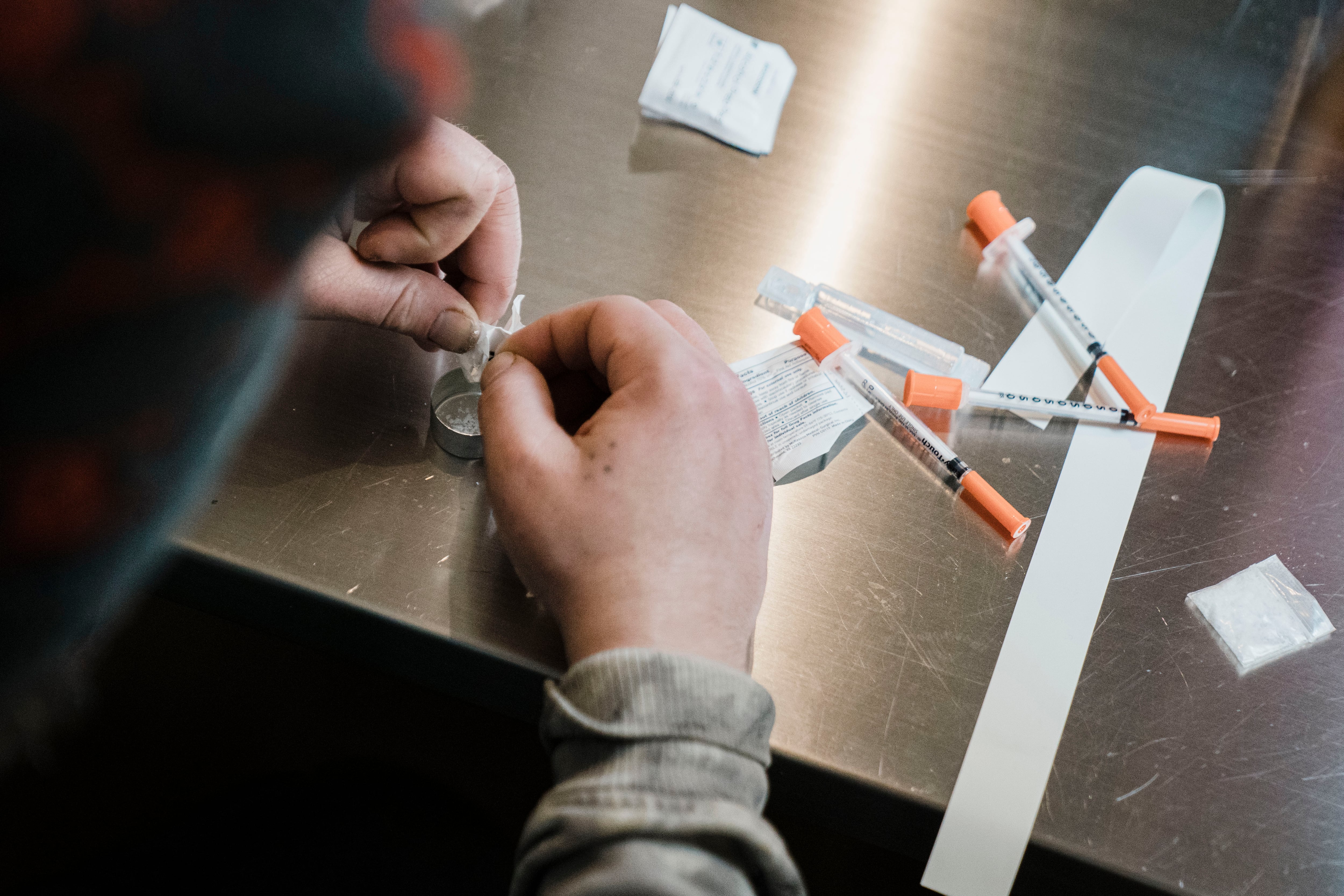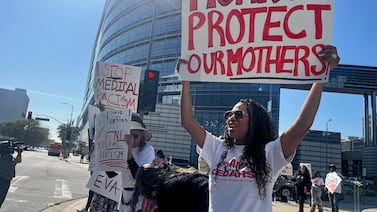Public health, explained: Sign up to receive Healthbeat’s free New York City newsletter here.
Drug overdose deaths in New York City decreased in 2023 for the first time in four years, according to data released Thursday by the Department of Health and Mental Hygiene.
The decline — from 3,070 deaths in 2022 to 3,046 deaths in 2023, a 1% decrease — was slight but promising, city officials said.
“I’m very cautiously and humbly excited about these data, because it shows overall that our comprehensive efforts here in New York City are starting to have an impact,” Health Commissioner Dr. Ashwin Vasan said during a media briefing on Thursday organized by The Big Cities Health Coalition, which represents health officials from major cities across the country.
Provisional data for 2024 released by the Health Department suggest a continuation of that downward trend, with 616 overdose deaths in the first quarter of this year — the lowest number of deaths per quarter since 2020.
“The first time since 2018 without a significant increase represents the beginnings, the green shoots, of progress,” said Vasan, who plans to step down from his post on Friday.
The city’s data mirror national trends. Earlier this year, the Centers for Disease Control and Prevention announced provisional data showing a 3% decrease in nationwide drug overdose deaths, from 111,029 estimated deaths in 2022 to 107,543 estimated deaths in 2023 — the first annual decrease since 2018.
In a statement, Mayor Eric Adams applauded the city’s decline in overdose deaths.
“A 1% decrease in drug overdose fatalities may not seem like a statistic worth celebrating to some — but those are still 24 fewer lives that were lost this past year, 24 families who still have their loved one around — and I believe that is a milestone worth recognizing,” he said.
Even so, New York City’s overdose death rate remains high. The rate of overdose death in 2023 (44.0 per 100,000 residents) has more than doubled since 2018 (20.2 per 100,000 residents) and nearly quadrupled since 2013 (11.4 per 100,000 residents).
The data released on Thursday also show widening disparities among the city residents who die of overdoses.
The rate of overdose death among white New Yorkers decreased 14% in 2023 — but increased 2% among Latino New Yorkers and remained high and largely unchanged among Black New Yorkers, according to the data.
Black New Yorkers ages 55 to 84 had the highest rate of overdose death (115.5 per 100,000 residents) compared to other demographic groups, and Bronx residents shouldered the highest rate of overdose death (78 per 100,000 residents) among residents of the five boroughs.
Vasan acknowledged the disproportionate burden of overdose deaths on older Black men in the city during Thursday’s briefing.
Those deaths, he said, reflect “the cumulative effects of long-term physical and health neglect, long-term social and economic need and marginalization, certainly the impacts of racism underlying all of that, and the impact on their fragility in the face of a shifting drug supply.”
Fentanyl, a synthetic opioid roughly 100 times more powerful than morphine, appeared in 80% of the city’s overall overdose deaths in 2023. The presence of xylazine, a veterinary tranquilizer, has become increasingly common, appearing in 31% of the city’s fatal overdoses last year.
In his remarks, Vasan highlighted the city’s use of opioid settlement funds to expand the hours of the city’s overdose prevention centers, invest in other syringe service providers, and support Relay, an emergency department-based nonfatal overdose response program.
His agency has weathered criticism from some harm reduction advocates, including members of the New York State Opioid Settlement Fund Advisory Board, over a perceived lack of transparency in the city’s allocation of its funds earmarked for treatment, recovery and prevention.
The funds come from legal settlements with pharmaceutical companies that produced and distributed opioids.
Eliza Fawcett is a reporter covering public health in New York City for Healthbeat. Contact Eliza at efawcett@healthbeat.org .






